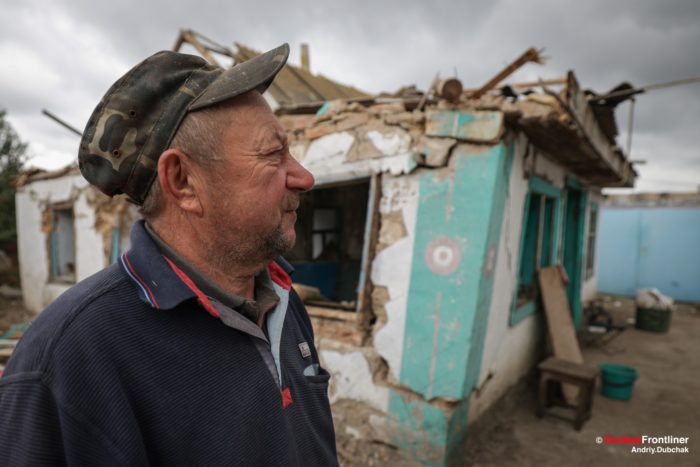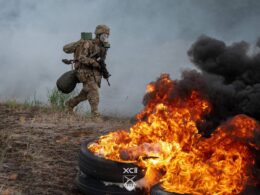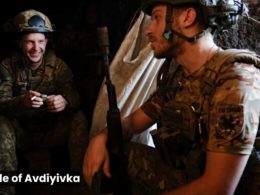Combat engagements across Ukraine's frontline have exploded—surging 30% from 3,274 in February to 4,270 in March—as Russian forces concentrate firepower on Donbas for their planned summer offensive.
Peace talks have hit a brick wall. Putin demands Ukraine abandon territories in Donetsk, Luhansk, Zaporizhzhia, and Kherson oblasts that Russia claims but doesn't control. Ukraine's response? "If you want the land, come and take it."
After three years of bloody stalemate, Putin still can't secure these regions—yet Bloomberg reports he remains convinced his army will capture them by year's end.
Can Russia's military actually deliver on Putin's territorial ambitions? Radio Free Europe/Radio Liberty investigates whether the Kremlin's Donbas gamble will finally pay off in 2025—an analysis later expanded and contextualized by Euromaidan Press for broader audiences.
Russian summer offensive is already underway
Analyst Victor Kevlyuk from the Center for Defense Strategies says the mission to capture Donbas has been assigned to Russia’s "South” military grouping. Operating across a 140-kilometer stretch of the front, this force comprises six combined-arms armies.
Together, they field approximately 130,000 troops, up to 700 tanks, 2,400 armored fighting vehicles, and 1,500 artillery pieces, mortars, and multiple rocket launchers.
Military analyst Serhiy Hrabskyi adds that Russia is focusing its main military efforts on four key sectors of the front: the areas around Novopavlivka, Pokrovsk–Myrnohrad, Toretsk, and Chasiv Yar. Russia's central objective is to gain full control of the strategic route running through Pokrovsk, Myrnohrad, Kostiantynivka, and Chasiv Yar.
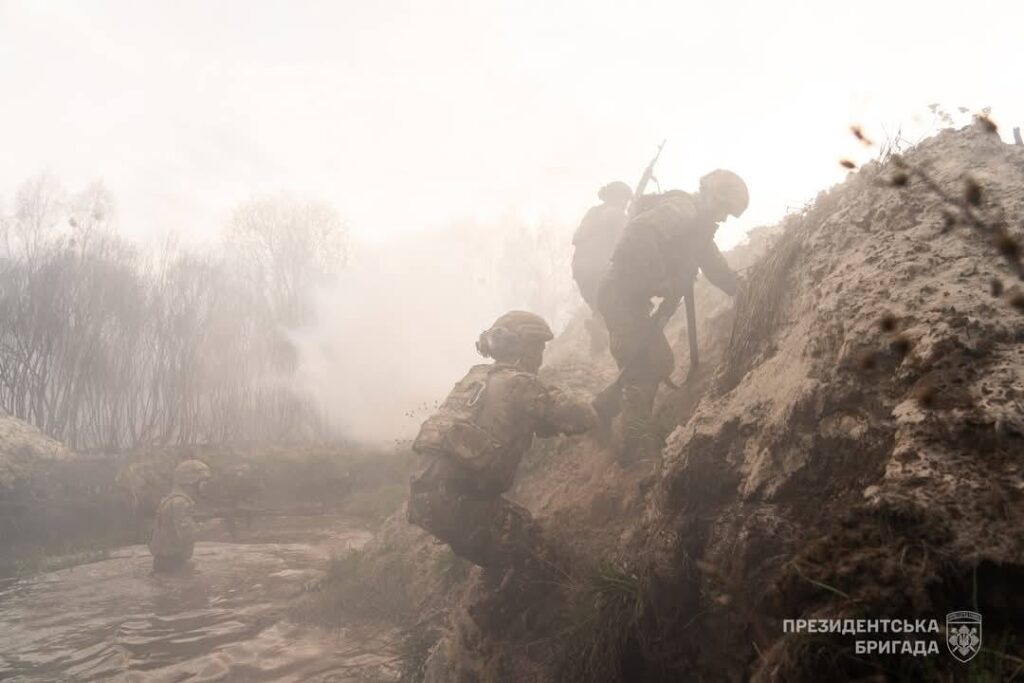
"Russian territorial gains increased from 123 square kilometers in March to 150-160 square kilometers in April," notes Hrabskyi.
While the offensive's overall pace has slowed, both the number of engagements and fire intensity have risen dramatically. With unprecedented daily clashes reaching 270, the combat intensity has reached extraordinary levels.
As Hrabskyi concludes, "The offensive is already underway."
Brutal street fighting in Toretsk and Chasiv Yar
The battles for Toretsk and Chasiv Yar have dragged on for over 10 months and more than a year, respectively, with Russian forces failing to make meaningful gains despite relentless assaults. As urban combat grinds on, Hrabskyi notes that Russia exploits a harsh truth of city warfare: quantity often trumps quality.
"Russian troops have stalled in both Toretsk and Chasiv Yar," Hrabskyi explains. "That's why they're attempting to bypass the Pokrovsk–Myrnohrad agglomeration, aware of the fierce battles that await them there."

Russia continues to use the same encirclement strategy employed in Avdiivka—surrounding Ukrainian positions on three sides, then pounding them with artillery, mortars, and glide bombs to force a retreat. "It's a tactic they continue to rely on and believe works for them," Hrabskyi concludes.
The human cost is staggering: Russian forces have lost approximately 50,000 soldiers—including 20,000 killed—fighting for Toretsk, according to Major Serhiy Khominskyi of Ukraine's 100th Separate Mechanized Brigade. Once a thriving industrial town of 30,000, Toretsk now lies nearly destroyed, with just 48 civilians remaining.
"Toretsk is key because it opens the road to Kostiantynivka, the first in a chain of cities—Druzhkivka, Kramatorsk, Sloviansk—that form the heart of unoccupied Donbas," Khominskyi told Ukrainian TV.
Ukrainian forces halt Russia near Pokrovsk
In the Pokrovsk sector, Ukrainian forces not only halted Russia’s spring offensive but also launched successful counterattacks near Pishchane and Shevchenko. Despite this, Russia’s exhausted “Center” grouping continues its assault, though Kevlyuk notes they are unlikely to capture Pokrovsk or Myrnohrad.
“The 41st Army, leading the Pokrovsk offensive, began with three brigades—now heavily depleted,” Kevlyuk explains. “They’re constantly replenished with mobilized reserves from other fronts. Losses don’t stop them, even when gaining just 100 meters takes three days.”

Pokrovsk remains strategically vital as a major logistics and supply hub for Ukrainian forces defending the eastern front. Its fall would significantly undermine Ukraine’s ability to sustain operations across Donetsk Oblast and beyond.
Since early April, Russian forces have also pushed west toward Dnipropetrovsk Oblast. The heaviest fighting is centered around the village of Udachne, where Ukrainian units are holding firm. Elsewhere, Russia has made limited tactical gains—between Uspenivka and Novooleksandrivka, and between Nadiyivka and Zaporizhzhia. After weeks of combat, Kotlyarivka is either fully under Russian control or remains contested, with the Dnipropetrovsk border just three kilometers away.
Analysts view this westward advance as more political than practical.
Trending Now
“That move is purely symbolic,” Hrabskyi asserts.
“From a military standpoint, it lacks strategic value. Even if they breach the border, they’ll face another defensive line along the Solona River. This is about claiming they’ve entered Dnipropetrovsk Oblast and begun its ‘liberation.’”
Russia eyes Lyman for northern Donbas breakthrough
In the Lyman direction, Russian forces have made limited but notable gains. This spring, they expanded their foothold west of the Zherebets River, advancing south toward Lyman and west toward the Oskil River, capturing Katerynivka and Novomykhailivka just before Easter.
"This was initially a secondary axis," Kevlyuk notes, "but given their success, it's likely the 25th Army will continue advancing toward Stepove and possibly further to Borova." This push is part of Russia's broader strategy to outflank Ukrainian defenses in Donetsk Oblast from the north and secure key logistical routes.

Lyman is a critical railway hub and gateway to Donbas, offering a key supply corridor and a natural defensive position near the Siverskyi Donets River. Borova, in neighboring Kharkiv Oblast, lies along the Oskil River and threatens Ukrainian positions around Lyman, potentially enabling deeper advances into Donetsk. Stepove, meanwhile, provides a tactical opportunity to bypass fortified defenses, encircle Ukrainian units, and disrupt supply lines.
These operations support Russia’s broader objective of destabilizing Ukraine’s eastern front. Analysts also warn that this foothold could be used to seize the final 1% of Luhansk Oblast still under Ukrainian control—completing Russia’s long-standing goal of fully occupying the region.
Will Russia capture the rest of Donbas in 2025?
According to Kevlyuk, Russia may have a chance to achieve its Donbas objectives—but only with sustained focus. Diverting resources to Kharkiv, Sumy, or Dnipropetrovsk oblasts would undermine this strategic aim.
"Their so-called constitution references Luhansk, Donetsk, Zaporizhzhia, and Kherson oblasts—but says nothing about Kharkiv, Sumy, or Dnipropetrovsk. So why shift resources there?" Kevlyuk questions.
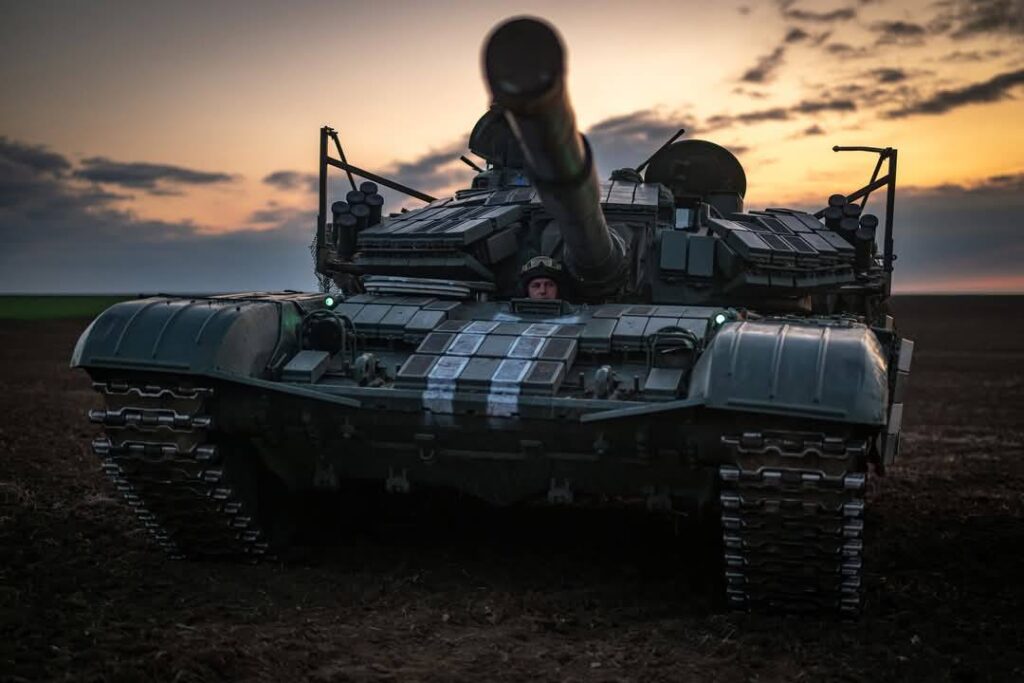
On narrow frontlines at Toretsk–Tarasivka and Yampolivka–Terny, Russian forces have achieved a staggering 10:1 advantage in manpower and equipment—yet even this hasn't produced rapid breakthroughs.
"This war has rewritten the old textbooks," Kevlyuk explains.
"Before the full-scale invasion, a 2:1 advantage was considered sufficient. Now, with drones watching 15-20 kilometers behind lines, secretly amassing strike forces is nearly impossible."
Russia currently lacks strategic reserves for a large-scale offensive, with even operational reserves severely limited.
"Even if they break through Ukraine's tactical defense zone, they lack mobile armored units to exploit success and achieve operational outcomes. We're seeing only positional battles and infantry attacks—that's all they're capable of," Kevlyuk concludes.
Russia's primary 2024 goal appears to be capturing the remaining 20% of Donbas still under Ukrainian control. However, even with localized breakthroughs, Russia lacks the reserves to press deeper into Ukrainian territory.


